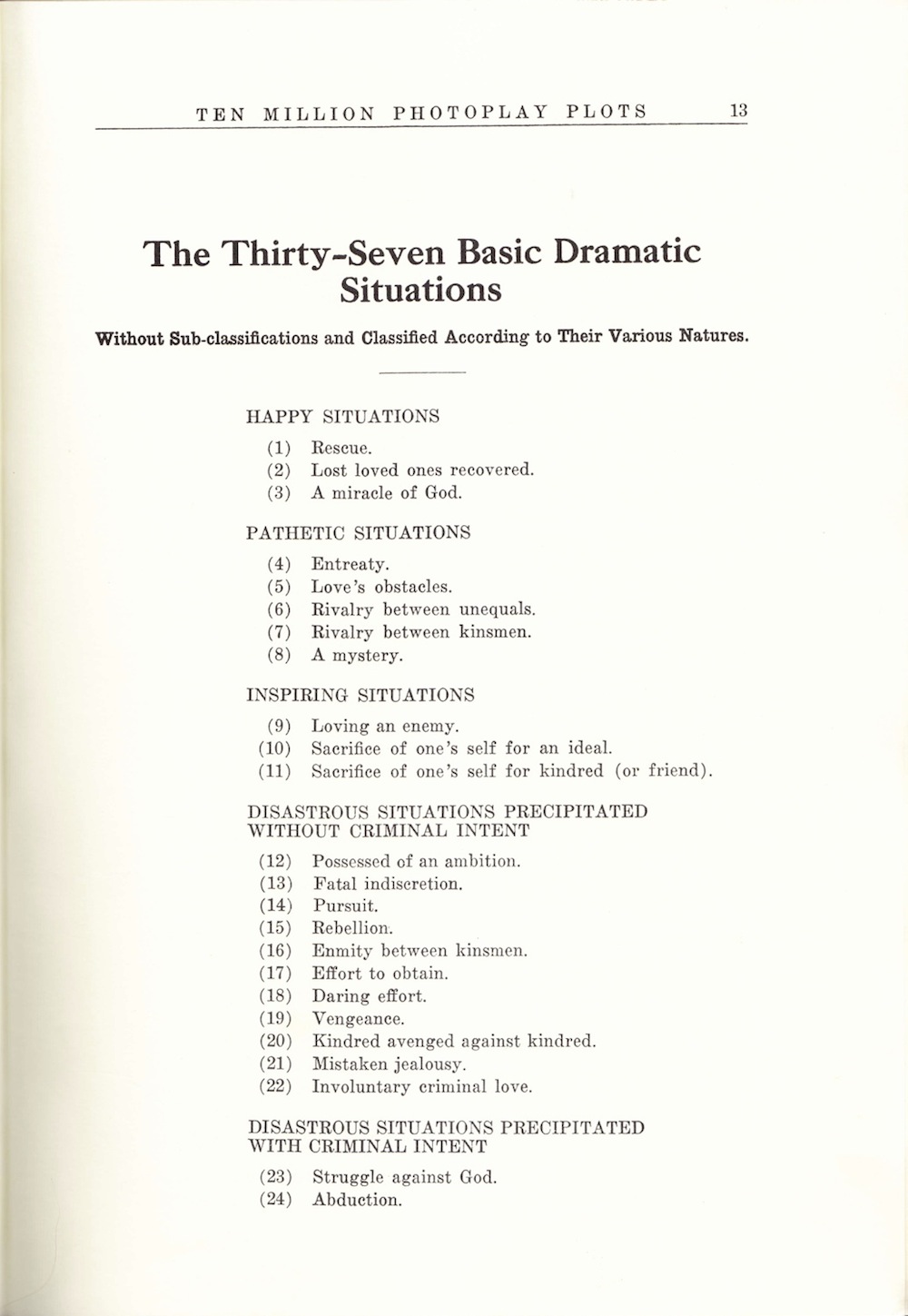It's a lovely piece of narrative theory from Wycliff Aber Hill's 1919 book Ten Million Photoplay Plots: The Master Key to All Dramatic Plots, part of a tradition of stage-play manuals that presented related taxonomies for aspiring writers.
In some ways, this is richer than today's Hollywood hero's journey/verse-verse-chorous orthodoxy, and certainly an improvement on "there are only two stories: someone comes to town, or someone leaves town."
Historians Ben Brewster and Lea Jacobs point out that Hill's book was part of a tradition, citing 19th-century playwriting manuals that likewise listed catalogs of "situations" that could provoke action and frame a plot. Nor was Hill the only screenwriter to publish a list of this type around this time; Frederick Palmers, whose Photoplay Plot Encyclopedia (1922) can be read on the Internet Archive, gathered 36 situations instead of 37.
The 37 Basic Plots, According to a Screenwriter of the Silent-Film Era
[Rebecca Onion/Slate]
(via Kottke)










